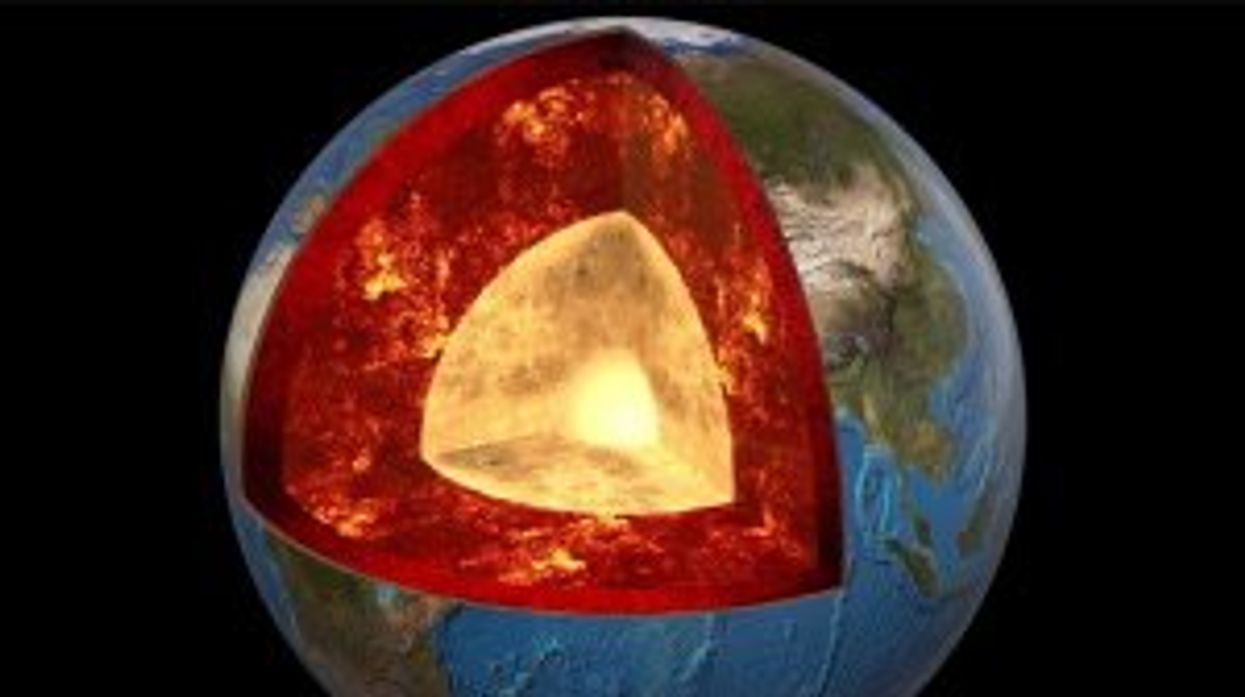Harriet Brewis
Sep 18, 2025
Scientists Just Got a Look at the Ultra-Low Velocity Zone Nearly 2,000 …
Many of us look to the stars for answers to life’s most complex questions. But actually, some of the greatest mysteries lie beneath our very feet.
One might think we’d know the Earth pretty well by now but, in fact, our planet’s core remains shrouded in enigma.
Indeed, there are two gigantic blobs located beneath Africa and the Pacific Ocean that occupy around six per cent of the world’s entire volume. And yet, we’re still not entirely sure what they’re made of or where they came from.
There are a number of hypotheses, including that they are piles of oceanic crust that have accumulated over billions of years.
But a more interesting theory is that they are huge chunks of an ancient planet that hit the Earth around 4.5 billion years ago.
To give an indication of just how massive these things are, the structure under Africa – an area known as Tuzo – is thought to be around 800km (497 miles) tall – the equivalent of some 90 Mount Everests stacked on top of one another, as IFLScience notes.
The problem with determining the origin of these monster formations is that there are no direct ways of observing the Earth’s core.
The deepest hole humans have ever dug – branded the "entrance to hell" – reached a pretty staggering 12,263m (40,230ft), but that doesn’t even come close to breaking through the crust to the layers beneath.
Our most effective tool for analysing what lies beneath the ground is a technique called seismic tomography, which looks at how waves of energy travel when earthquakes occur.

Since rocks and liquids have different densities, the waves move through them at different speeds.
By measuring the tremors from different points on the surface, geologists can determine what kind of material the waves are travelling through and, in so doing, map out the Earth’s interior.
It was by using this technique that the two unusual structures – known as large low shear velocity provinces (LLSVPs) – were found.
Waves travel more slowly in these areas – fondly known as “blobs” – than through the surrounding lower mantle, indicating that they’re made of something different.
We can’t tell what this material is based on seismic tomography data alone, but some scientists like to believe that they are the remnants of an ancient planet called Theia – an idea known as the “giant impact hypothesis”.
According to this hypothesis, around 4.5 billion years ago, a Mars-sized object collided with the Earth.
This impact not only created the planet we call home today, but also threw off enough rock to form the moon that lights up our night skies.
Some scientists suggest that some of Theia’s leftovers also sunk to the bottom of the planet, probably settling somewhere above the core – thereby forming at least one of the two LLSVPs.
More Updates About Strange Blob Structures Inside Planet Earth youtu.be
Experts have been investigating the area for decades but there’s still no way of knowing for sure just what these two giant blobs are.
Still, studies into Theia have offered important insights into how the possible collision might have kickstarted key plate tectonic and mantle motion inside our planet – crucial processes for establishing the world on which we live.
It’s also a useful reminder that we still have so much to learn about our planet and where we came from.
It comes as recent findings suggested that Earth apparently doesn’t have seven continents after all. From a young age, we’re taught that the world is made up of Africa, Antarctica, Asia, Oceania, Europe, North America, and South America, and yet, new research suggests that this isn’t, in fact, the case.
This article was first published on October 17, 2023
Why not read...
- ‘World’s oldest pyramid' was not made by humans, archaeologists claim
- Structure double the size of world's tallest building found in the Pacific
- Incredible film of 'hollow island' in middle of ocean shared by divers
Sign up for our free Indy100 weekly newsletter
How to join the Indy100's free WhatsApp channel
Have your say in our news democracy. Click the upvote icon at the top of the page to help raise this article through the Indy100 rankings
Top 100
The Conversation (0)













